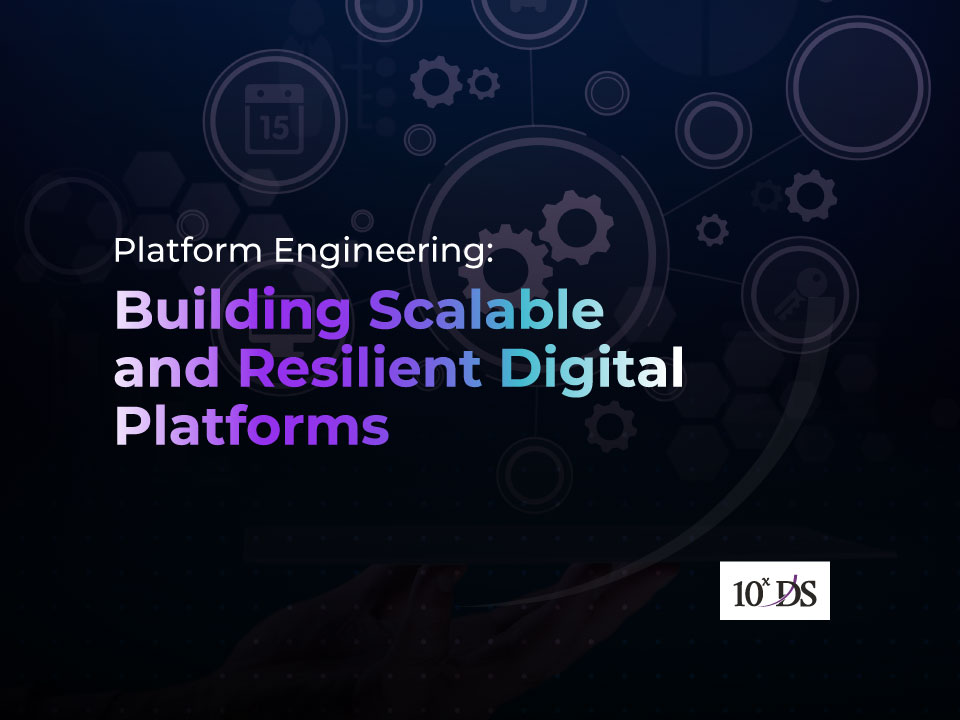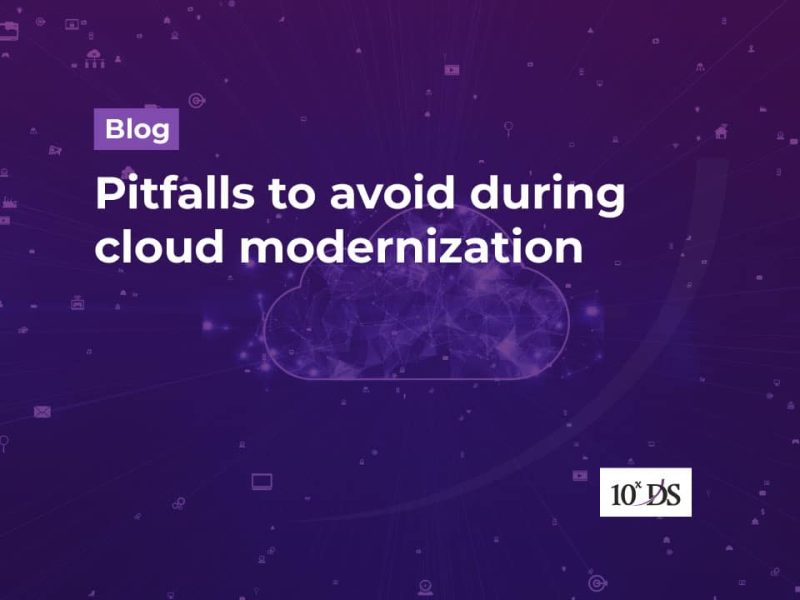
Platform Engineering: Building Scalable and Resilient Digital Platforms
Modern enterprises face increasing demands on their IT systems and infrastructure due to the growth of digital technologies, expanding customer bases, and evolving business needs. Performance bottlenecks or downtimes are hard to accommodate for businesses to sustain amid the competitive pressures. Enterprises also need the ability to quickly adapt and respond to changing market conditions and customer demands, so they constantly explore new technologies, data-driven insights, and innovative solutions to stay competitive. The need of the hour was to create a robust and scalable infrastructure, development tools, APIs, and services that enable developers to build and deploy applications more efficiently. That is exactly what platform engineering seems to solve. Platform engineering refers to the discipline of designing, building, and maintaining software platforms or frameworks that provide a foundation for developing and delivering applications and services. It focuses on the technical aspects of building and managing platforms, ensuring they are secure, reliable, and performant. It involves various areas such as cloud computing, DevOps practices, infrastructure management, automation, containerization, and orchestration.
Cloud Computing
Cloud computing provides a scalable and flexible approach to accessing and utilizing computing resources, including storage, processing power, and software services. Platform engineers leverage Infrastructure as a Service (IaaS) to build the foundation for their platforms, managing and scaling the infrastructure resources based on application needs and Platform as a Service (PaaS) to build and host their software platforms, taking advantage of pre-configured development tools, runtime environments, and services. With cloud-based infrastructure, platform engineers can easily add or remove computing resources based on demand, ensuring optimal performance and cost-efficiency. Scaling can be done horizontally, that is by adding more instances or vertically by increasing resources of existing instances. Cloud computing platforms also provide automation and orchestration capabilities along with Service-oriented Architecture (SOA) which allows design of systems as a collection of modular and loosely coupled services. Integration and Interoperability also become easier by standardized APIs and protocols.
DevOps practices
DevOps practices and platform engineering are closely intertwined, as both focus on streamlining software development and deployment processes while maintaining a stable and scalable platform. It emphasizes collaboration, automation, and continuous integration and delivery (CI/CD) to enable efficient software development and deployment. DevOps promotes collaboration and communication between development, operations, and other teams involved in the software delivery lifecycle. Platform engineering utilizes automation tools and processes to streamline and accelerate software delivery which is a key principle of DevOps. Automation can include infrastructure provisioning, configuration management, deployment pipelines, testing, and monitoring. Platform engineering often adopts the concept of Infrastructure as Code (IaC), where infrastructure provisioning and configuration are managed through code. This approach enables platform engineers to treat infrastructure resources, such as servers, networks, and storage, as code, allowing for versioning, repeatability, and automation. It also embraces agile methodologies, such as Scrum or Kanban, to enable incremental platform improvements, faster feedback cycles, and continuous learning.
Infrastructure management
Infrastructure management is an essential aspect of platform engineering that involves the administration, monitoring, and optimization of the underlying hardware, software, and network resources that support a software platform. It encompasses tasks such as provisioning and configuring servers, managing databases, setting up networking components, and ensuring overall system reliability and security. Platform engineers are responsible for designing and implementing efficient infrastructure management practices to support the platform’s scalability, availability, and performance. They utilize automation tools, monitoring systems, and configuration management techniques to streamline infrastructure operations, minimize manual intervention, and respond swiftly to incidents or changes in demand. Effective infrastructure management ensures that the platform remains stable, secure, and capable of meeting the organization’s evolving requirements, while enabling efficient deployment, scaling, and maintenance of applications and services on the platform.
Automation
Automation helps in streamlining and accelerating various processes involved in building, deploying, and managing software platforms. Platform engineers leverage automation tools and practices to reduce manual effort, improve efficiency, and ensure consistency. Automation is employed in tasks such as infrastructure provisioning, configuration management, deployment pipelines, testing, and monitoring. By automating these processes, platform engineers can achieve faster and more reliable deployments, reduce human errors, and enable rapid scaling of the platform. Automation also promotes repeatability and reproducibility, allowing infrastructure changes and deployments to be versioned, tracked, and easily replicated. Additionally, automation helps enforce best practices and compliance requirements, ensuring that configurations and deployments adhere to established standards. Ultimately, automation in platform engineering enables organizations to achieve greater agility, scalability, and stability in managing their software platforms.
Containerization
Containerization is a critical concept in platform engineering that involves encapsulating applications and their dependencies into isolated, lightweight containers. It provides a consistent and portable runtime environment, allowing platform engineers to package applications and their required libraries, frameworks, and configuration files together. Containers offer several benefits for platform engineering, including simplified deployment and scalability. They enable the seamless movement of applications across different environments, such as development, testing, and production, without compatibility issues. With containerization, platform engineers can achieve better resource utilization by running multiple containers on a shared infrastructure. Containers also promote modularization, allowing different components of a platform to be developed, deployed, and managed independently. This enhances flexibility, enables continuous integration and delivery (CI/CD) practices, and facilitates the creation of microservices architectures. Overall, containerization empowers platform engineers to build and maintain scalable, portable, and efficient software platforms.
Orchestration
Orchestration involves the coordination and management of various components and services within a software platform. It focuses on automating the deployment, configuration, and operation of these components to ensure they work together seamlessly. Platform engineers utilize orchestration tools and frameworks to define and manage the relationships, dependencies, and interactions between different services and infrastructure resources. Orchestration enables efficient scaling, load balancing, and fault tolerance by dynamically adjusting resources based on demand. It facilitates the deployment of complex, multi-tier applications by automating the provisioning of required infrastructure, setting up network connections, and managing service discovery. Orchestration also plays a crucial role in monitoring and maintaining the health and performance of the platform by enabling proactive alerting, logging, and troubleshooting. Overall, orchestration empowers platform engineers to create and manage scalable, resilient, and highly available software platforms, allowing businesses to efficiently deliver applications and services to their users.
Real-life case studies
Netflix is an excellent example of how platform engineering practices have played a crucial role in enabling companies to build and scale their platforms, deliver reliable services, and provide an exceptional user experience. They have built a highly scalable and resilient platform that enables seamless streaming of video content to millions of users worldwide. Netflix has invested heavily in cloud infrastructure, leveraging Amazon Web Services (AWS) to dynamically scale their platform based on demand. They utilize containerization technologies like Docker and orchestration tools like Kubernetes for efficient deployment and management of their microservices-based architecture. Netflix’s platform engineering approach allows them to deliver a personalized and uninterrupted streaming experience to their subscribers.
As a leading online marketplace for accommodations, Airbnb relies on a platform engineering approach to manage its vast ecosystem. They have developed an advanced service-oriented architecture where platform teams provide a suite of services that enable hosts and guests to interact seamlessly. Airbnb’s platform engineering efforts focus on building scalable and secure APIs, managing data storage and retrieval, and ensuring high availability. They also employ sophisticated monitoring and logging systems to identify and resolve issues proactively, ensuring a smooth user experience.
Companies like Google, Salesforce, and Spotify have successfully leveraged platform engineering to build and maintain highly successful and scalable platforms. With the continuous evolution of technology and increasing digital demands, platform engineering will remain a vital practice for enterprises seeking to thrive in today’s competitive landscape. By adopting and embracing platform engineering principles and best practices, organizations can position themselves for success in delivering cutting-edge applications and services to their customers.
Talk to our experts to know more.
